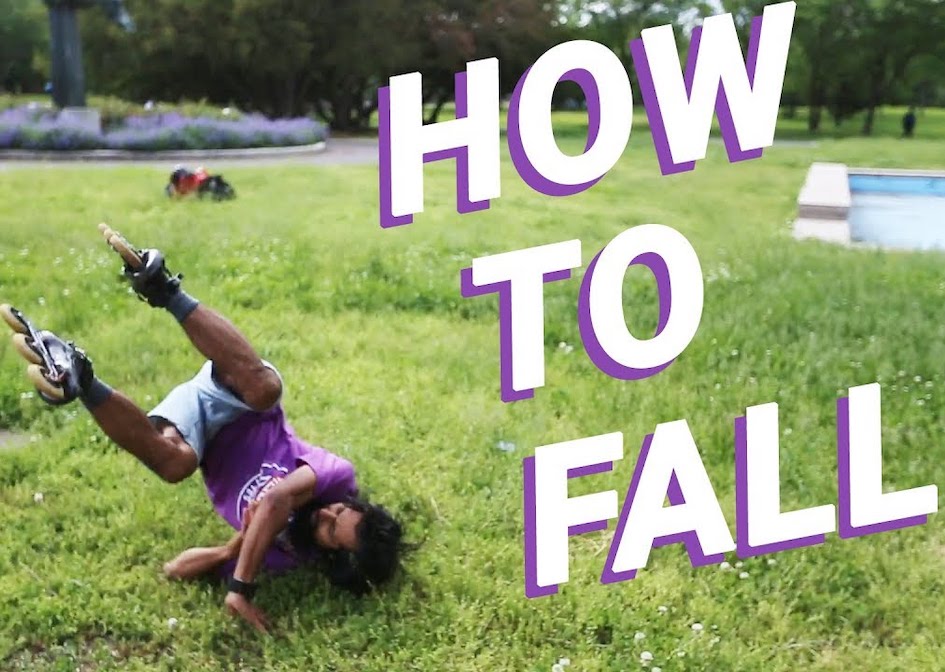How to fall safely on roller skates and rollerblades

You ready to roll with confidence? Whether you are just a beginner or looking to enhance your skate game, the art of safe falling is pretty essential in your journey. Here are 15 expert tips that will get you gliding through your roller skating or inline skating journey with ease and safely.
Key Takeaways
Falling safely is a skill all skaters—from beginner to pro—ought to be familiar with. Here's the thing:
- you want to get comfortable falling in a nice, safe area, so get out there and practice falling
- always keep good posture: bend your knees and keep your weight centered
- Protect your head and hands during falls
- Learn effective ways to stop like the T-stop and power stop
- Stay aware of your surroundings to avoid potential falls
Falling is an inherent part of learning. Grasp these techniques, and you are skating around freely, with reduced risks to injury. Ready to roll? Let's dive into these tips in greater detail!
How to Fall Safely
Why is learning to fall safely so important? Imagine gliding along, and wham.—you hit that unexpected bump. If you don't know the proper falling techniques, this could easily result in a very painful tumble. But with the right skills, you can turn that potential disaster into a graceful recovery.
Falling techniques are like your personal security blanket, which enables you to be creative on your skates without apprehension. They aren't only for the beginners – even pros call upon these skills when they're busting out crazy moves.
15 Expert Tips for Safe Falling or preventing Falling
1. Keep Your Balance
Balance is the foundation of safe skating. How can you maintain it?
- Center your weight over your skates
- Do not lean too far forward or backward
- Now, imagine yourself to be a strong tree, firmly rooted but flexible.
2. Controlled Falling: practice in safety Environment
You must have heard the phrase, "practice makes perfect." Well, it's time to practice falling!
Find a safe environment with grass in the park or carpet on the floor. First, practice stationary falls, then increase your speed. This controlled falling will create muscle memory to perform the same actions in real life.
3. Bend Your Knees
Why is knee-bending so important? It lowers your center of gravity, making you more stable. Think of it as creating a shock absorber for your body.
When you feel wobbly, bend those knees! It's your first line of defense against falls.
4. Protect Your Head and Hands
Your brain and hands are precious – guard them well! How?
- Tuck your chin to protect your head
- Keep your hands in front of you
- Always wear a helmet and wrist guards
Remember, safety gear is your best friend on wheels!
5. Roll with the Fall
When you fall, be like water – flow with the motion. Keep your limbs bent and avoid locking your joints. This technique distributes the impact, reducing your risk of injury.
6. Fall Forward or to the Side
Backward falls can be dangerous, especially for your head. If you feel yourself losing balance, aim to fall forward or to the side. It gives you more control and reduces the risk of head injuries.
7. Tuck and Slide
When falling forward, become like a superhero:
- Tuck your chin to your chest
- Slide on your knee pads and wrist guards
- Protect your face and head while coming to a safe stop
8. Learn Advanced Brake Methods
As you progress, explore techniques like the powerslide and magic slide. These are your high-speed safety nets, helping you maintain control in challenging situations.
9. Use the Heel Brake Effectively
For inline skaters, the heel brake is your best friend in tight spots. Practice using it at various speeds – it could be your lifesaver in high-speed situations!
10. Maintain Your Equipment
Your skates are your vehicle – keep them in top shape! Regularly check:
- Wheels for wear and tear
- Bearings for smooth rotation
- Brakes for effectiveness
Well-maintained equipment reduces your fall risk significantly.
11. Stay Aware of Your Surroundings
Skating requires constant vigilance. Keep an eye out for:
- Obstacles in your path
- Uneven surfaces
- Other skaters around you
Being aware helps you avoid potential hazards before they become problems.
12. Build Core Strength
A strong core is your secret weapon for balance and stability. Try incorporating exercises like planks and Russian twists into your routine. Your skating will thank you!
13. Take Professional Lessons
Why reinvent the wheel? Learn from the pros check rollerblading lessons for beginners! Professional lessons can:
- Teach you proper techniques
- Help you avoid bad habits
- Boost your confidence on skates
Falling Backwards on Roller Skates or Inline Skates
Backward falls can be tricky, but with the right approach, you can handle them safely. Here's your game plan:
- Stay calm – panic is your enemy
- Tuck your chin to protect your head
- Bend your knees to lower your center of gravity
- Aim to land on the fleshy part of your lower back
- Keep your arms close to your body
- If possible, try to roll backward to distribute the impact
Remember, practice makes perfect. The more you rehearse these techniques, the more natural they'll become.
How to Brake on Roller Skates and Inline Skates
Effective braking is your key to preventing falls. Let's explore some techniques:
T-Stop
Think of the T-stop as drawing a "T" with your skates:
- Shift your weight to one foot
- Drag the other foot behind you, perpendicular to your direction
- Apply pressure with the dragging foot to slow down
Plow Stop (V-Stop)
The plow stop is like creating a snow plow with your skates:
- Turn your toes inward to form a V-shape
- Bend your knees and lean back slightly
- Apply pressure to the inside edges of your wheels
Heel Brake (for Inline Skates)
Using the heel brake is like stepping on a car brake:
- Shift your weight to the foot without the brake
- Lift the toe of your braking foot
- Press down on the heel brake, increasing pressure to slow down
Spin Stop
For the daring skaters, the spin stop is like a dancer's twirl:
- At moderate speed, quickly turn your body 180 degrees
- Bend your knees and slide to a stop
Practice these techniques in a safe area before trying them in busier locations.
Conclusion
Falling happens in skating, but it does not need to be intimidating. With these expert tips, you're now equipped to handle falls safely and with confidence. Always remember to protect yourself by wearing proper protective gear and practice in a safe environment.
Later on, as one becomes more confident, he may want to acquire some of the advanced techniques or, in some cases, even the aggressive rollerblading. However, all these should always be performed taking into account safety and good posture, whatever the level.
So, are you ready to lace up those skates and hit the rink or the streets? With these skills in your arsenal, you're prepared to roll with whatever comes your way. Happy skating, and may your falls be few and far between!
FAQs
How to fall safely on inline skates?
Fall safely on your inline skates by bending your knees and forwards, intending to hit on the ground with your knee pads and wrist guards. Tuck in your chin to the chest to protect your head, and slide or roll on contact to diffuse the shock. Always protect yourself well with protective gear, though.
How do you brake on inline skates?
You can brake with the T-stop, heel brake, or plow stop on inline skates. Drag one of your feet behind you perpendicularly in relation to your direction for the T-stop. Lift your toe and press down on the heel brake. The plow stop is where you turn your toes inward, creating friction.
How to fall correctly skating?
To fall correctly while skating, aim to fall forward or to the side rather than backward. Keep your knees bent, tuck your chin to your chest, and try to land on your knee pads and wrist guards. Avoid using your hands to break your fall, as this can lead to wrist injuries, as the goal to slide.
How to be safe on skates?
To stay safe on inline skates, always wear protective gear including a helmet, knee pads, elbow pads, and wrist guards. Practice proper skating techniques, maintain your equipment, and be aware of your surroundings. Learn how to stop effectively and practice falling safely in a controlled environment.
What are the most common injuries in roller skating?
The most common roller skating injuries include wrist fractures, elbow injuries, knee abrasions, and head injuries. Many of these can be prevented or minimized by wearing proper protective gear, learning correct falling techniques, and practicing safe skating habits.

